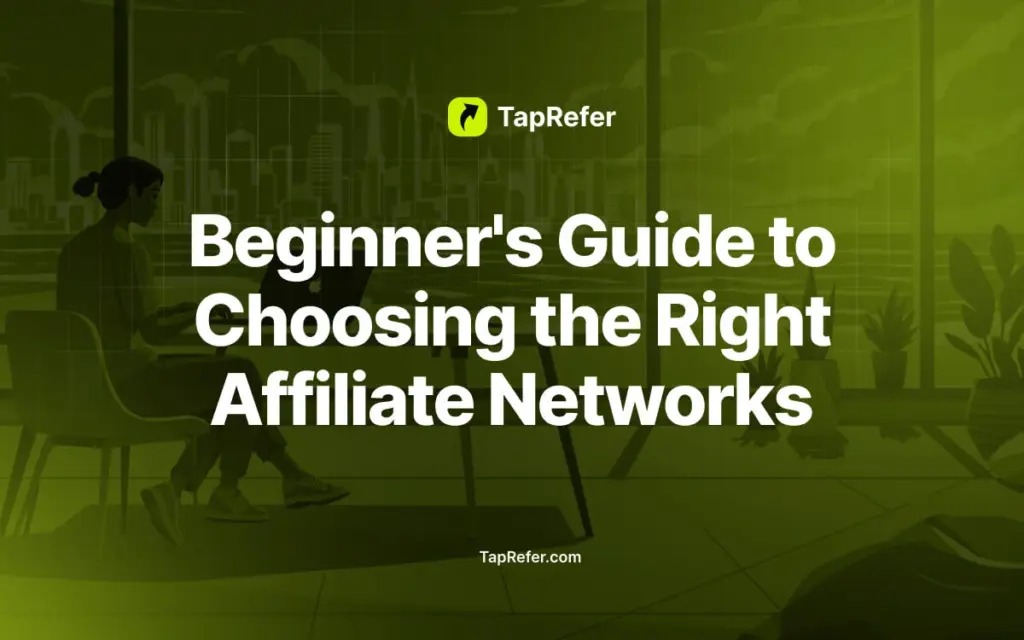Understanding the Value of Affiliate Program Listings
According to the Performance Marketing Association, affiliate marketing spending in the US reached $8.2 billion in 2022, with 81% of brands now leveraging affiliate partnerships to acquire customers. Behind these numbers lies a fundamental truth: strategic program listings aren’t just about visibility, they’re about connecting with the right partners at the right time.
When you list affiliate program opportunities on specialized platforms, you’re tapping into three distinct advantages that generic marketing channels simply can’t match. First, targeted discovery connects your brand with content creators actively searching for monetization opportunities in your specific niche. Unlike broad advertising that hopes to catch someone’s attention, directory listings put your program directly in front of people already looking to promote products like yours.
Second, the trust transfer effect cannot be underestimated. New affiliate programs often struggle with credibility, but being featured alongside established brands on reputable platforms immediately signals legitimacy. When affiliates see your program listed with verified reviews and transparent terms, they’re more likely to take a chance on promoting your products.
Finally, directory listings provide sustainable growth that paid recruitment campaigns can’t match. While sponsored posts might generate a temporary surge in applications, a well-optimized listing continues working for you month after month, creating a steady pipeline of qualified partners without ongoing investment. For small businesses and SaaS companies with limited marketing budgets, this evergreen recruitment channel delivers exceptional ROI compared to constant paid outreach.
What Affiliates Look for in a Program Listing

Commission Structure and Payouts
Experienced affiliates scan program listings with a calculating eye, immediately looking for specific commission details that determine potential profitability. They expect to see exact percentage rates (not vague ranges like “up to 30%”), precise cookie duration in days, clearly stated minimum payout thresholds, and all available payment methods.
For SaaS and subscription-based products, recurring commissions are particularly attractive. When affiliates see “20% lifetime recurring commission” versus “30% one-time commission,” many will choose the former because it builds sustainable income over time. Clarity about first-order versus lifetime value commissions helps affiliates project their potential earnings accurately.
Niche Relevance and Audience Fit
Before applying to your program, affiliates assess whether your product solves problems their audience actually has. They look for clear descriptions of your ideal customer, use cases, and price points to determine audience alignment. A fitness blogger won’t promote enterprise software, regardless of commission rates.
Smart affiliates also look for conversion indicators like average order values, conversion rates, or earnings per click. These metrics help them calculate potential returns on their promotional efforts. When you include this data in your listing, you attract partners who understand their audience well enough to know your offer will convert.
Transparency and Support Resources
The availability of promotional assets signals how seriously you take your affiliate program. Affiliates expect access to professionally designed banners, email templates, product images, and possibly video content. Programs that provide these resources demonstrate they’re invested in their affiliates’ success.
Clear terms about restricted promotion methods prevent future conflicts. Affiliates appreciate knowing upfront if bidding on branded terms, using certain traffic sources, or specific promotional tactics are prohibited. This transparency builds trust and prevents account terminations over misunderstandings.
Essential elements every affiliate program listing should include:
- Commission rate and structure (one-time vs. recurring)
- Cookie duration
- Payment methods and thresholds
- Available promotional materials
- Prohibited marketing tactics
- Product pricing information
- Affiliate manager contact details
Optimizing Your Program Submission on TapRefer
Creating a Compelling Program Description
Your program description needs to quickly capture attention and communicate value.
Follow this proven formula:
Problem → Solution → Unique Selling Point → Affiliate Benefits.
For example: “Content creators struggle to monetize their audience effectively. Our eco-friendly product line solves this with high conversion rates and customer loyalty. Unlike competitors, we offer plastic-free packaging that resonates with conscious consumers. Affiliates enjoy 15% lifetime commissions with 60-day cookies.”
Certain phrases act as magnets for experienced affiliates. Terms like “lifetime commissions,” “bi-weekly payments,” “30-day cookie duration,” and “dedicated affiliate manager” signal a program that understands affiliate needs. These specific benefits should appear early in your description, not buried in paragraphs of product information.
Highlight unique aspects that differentiate your program from competitors. If you offer the highest commission in your category, exclusive promotional tools, or special affiliate-only discounts, feature these prominently. Affiliates are constantly comparing opportunities, so make your competitive advantages impossible to miss.
Selecting the Right Categories and Tags
Proper categorization dramatically improves your discoverability within TapRefer’s search functionality. The platform’s filtering system helps affiliates narrow down thousands of programs to find relevant opportunities, making your category selection crucial for visibility.
Balance broad categories with niche tags for optimal reach. For example, an organic skincare line might select “Health & Beauty” as a primary category (reaching more affiliates) while adding specific tags like “organic,” “vegan,” and “sustainable” (reaching more relevant affiliates). This combination ensures you appear in both general searches and highly targeted queries.
Consider selecting strategic secondary categories to maximize exposure without appearing irrelevant. A digital course on sustainable living could reasonably appear in “Education,” “Lifestyle,” and “Eco-Friendly” categories, expanding reach while maintaining topical consistency. However, avoid stretching into unrelated categories, as this can damage credibility with serious affiliates.
Adding Visual Elements That Convert
On TapRefer, visual elements create immediate impact. Upload logos in 300x300px format with transparent backgrounds for clean integration across the platform.
Follow these steps to submit your program on TapRefer:
- Create your TapRefer account with complete business information
- Navigate to the submission form from your dashboard
- Complete all required fields with detailed program information
Common Mistakes to Avoid When Submitting

The difference between programs that attract quality affiliates and those that languish often comes down to avoiding critical submission errors. Four common mistakes consistently undermine otherwise promising programs:
Incomplete information creates uncertainty that professional affiliates won’t tolerate. When advertisers leave fields blank or provide vague details about commission structures, cookie duration, they signal disorganization. Experienced affiliates interpret missing information as red flags, assuming the worst about undisclosed terms. For example, not specifying cookie duration leads affiliates to assume it’s minimal, even if you actually offer generous 30-day cookies.
Misleading claims damage credibility beyond repair. Statements like “Earn $10,000 in your first month!” appear desperate and untrustworthy to seasoned affiliates. Instead, specific, verifiable claims build confidence: “Our top 10% of affiliates average $2,300 monthly with consistent promotion.” Transparency about realistic earnings expectations attracts serious partners looking for sustainable opportunities.
Poor visual presentation undermines your entire program. Low-resolution logos, missing banners, or unprofessional creatives signal to affiliates that you likely won’t provide adequate marketing support. If you can’t invest in quality visuals for your own program listing, affiliates question whether you’ll invest in product quality and customer experience.
Outdated information creates frustration and abandoned applications. When commission structures, product features, or terms change without updating your listing, affiliates waste time applying to programs that no longer match their expectations. This damages your reputation within affiliate communities where experiences are frequently shared.
Red flags that experienced affiliates immediately notice:
- Vague commission information
- Missing contact details for affiliate support
- Unrealistic earning claims
- No information about payment schedules
- Lack of promotional materials
- Restrictive terms hidden in fine print
Boosting Visibility After Submission
Leveraging Social Proof
Once your program is live, actively cultivate reviews from your existing affiliates. Send personalized emails to your top performers asking them to share their honest experience on your TapRefer listing. Specific prompts like “What aspect of our support has been most helpful?” or “How has our commission structure compared to other programs you promote?” generate more meaningful testimonials than generic review requests.
Incorporate success stories directly into your program description. Brief case studies highlighting how specific affiliates achieved success with your program provide powerful social proof. For example: “Fashion blogger Maria J. generated $3,200 in commissions her first quarter by featuring our sustainable clothing line in her capsule wardrobe series.”
Transparency about performance metrics builds trust with potential affiliates. Consider adding aggregate statistics to your listing, such as average earnings per active affiliate, typical conversion rates, or average order values. These concrete figures help affiliates make informed decisions about whether your program aligns with their promotion strategy.
Cross-Promotion Strategies
Leverage your existing channels to drive traffic to your TapRefer listing. Include a link to your program in email signatures, company newsletters, and relevant blog posts. Create social media announcements highlighting the benefits of your affiliate program with direct links to your TapRefer profile.
Develop a dedicated affiliate recruitment landing page on your website that explains your program benefits and then directs interested parties to your complete TapRefer listing. This two-step approach allows you to capture interest through your own SEO efforts while leveraging TapRefer’s platform for program management.
Conduct targeted outreach to content creators in your niche. Rather than generic recruitment messages, reference specific content they’ve created that aligns with your products. Then direct them to your TapRefer listing where they can see complete program details, reviews from other affiliates, and apply through a standardized process.
Featured Placement Opportunities
TapRefer’s featured section provides premium visibility for select programs. These highlighted listings appear prominently on category pages and in search results, significantly increasing application rates. Consider applying for featured placement during key promotional periods or when launching new product lines.
Strategic timing of featured placements can maximize their impact. Align premium visibility with seasonal trends relevant to your product. For example, fitness products might seek featured placement in January when health resolutions peak, while educational courses might target August before the academic year begins.
Even without premium placement, you can improve category visibility by refreshing your listing content quarterly. Updates to your description, revised commission structures signal to the platform that your program is actively managed, potentially improving your organic ranking within category listings.
Key Takeaways for Maximizing Reach
After working with thousands of affiliate programs, three core principles consistently separate successful listings from those that struggle to attract quality partners:
Quality Over Quantity wins every time in affiliate recruitment. Programs that provide comprehensive, transparent information attract serious affiliates, while those offering astronomical commission rates but vague details primarily attract opportunity-seekers. Your listing should answer every question a professional affiliate would ask before they need to ask it.
Ongoing Engagement transforms good listings into great partnerships. Programs that actively promote their listings, respond promptly to affiliate inquiries, and regularly update their content demonstrate commitment to affiliate success. This active management signals to potential partners that you’ll be equally responsive when they have questions or need support with promotions.
Evolutionary Approach keeps your program competitive in a changing landscape. Treat your listing as a living document that evolves with product changes, market conditions, and affiliate feedback. Programs that adapt their terms, creative assets, and value propositions based on performance data consistently outperform static listings.
Take these immediate actions to improve your affiliate program exposure:
- Audit your existing program details for completeness and accuracy
- Develop a promotion plan for your listing across owned channels
- Establish a quarterly schedule for listing updates and refreshes
Remember that your program listing isn’t just an advertisement, it’s often the first impression potential business partners have of your company. By approaching it with the same strategic care you give to your product development and customer experience, you’ll attract affiliates who become long-term extensions of your marketing team.







